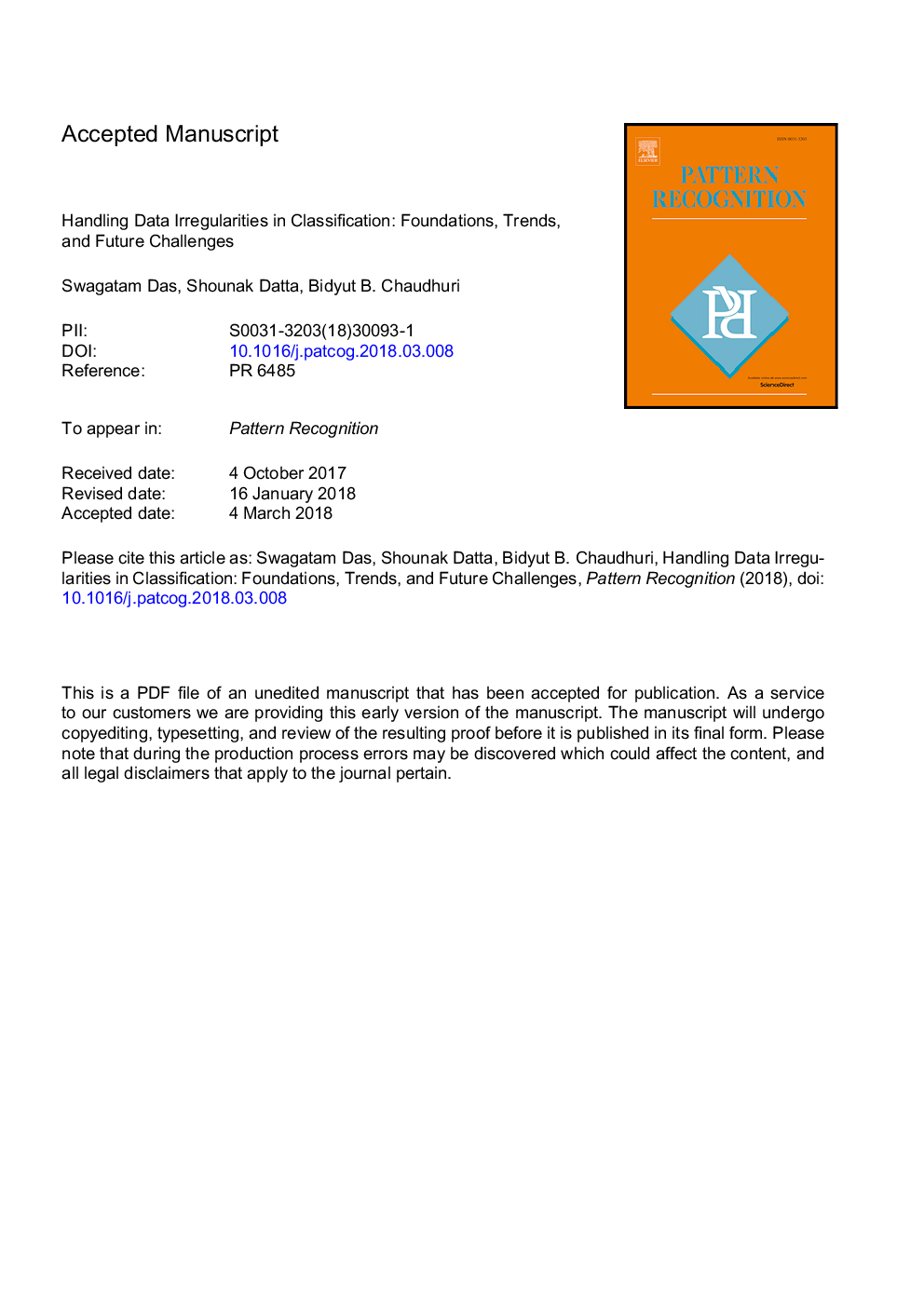| Article ID | Journal | Published Year | Pages | File Type |
|---|---|---|---|---|
| 6938915 | Pattern Recognition | 2018 | 46 Pages |
Abstract
Most of the traditional pattern classifiers assume their input data to be well-behaved in terms of similar underlying class distributions, balanced size of classes, the presence of a full set of observed features in all data instances, etc. Practical datasets, however, show up with various forms of irregularities that are, very often, sufficient to confuse a classifier, thus degrading its ability to learn from the data. In this article, we provide a bird's eye view of such data irregularities, beginning with a taxonomy and characterization of various distribution-based and feature-based irregularities. Subsequently, we discuss the notable and recent approaches that have been taken to make the existing stand-alone as well as ensemble classifiers robust against such irregularities. We also discuss the interrelation and co-occurrences of the data irregularities including class imbalance, small disjuncts, class skew, missing features, and absent (non-existing or undefined) features. Finally, we uncover a number of interesting future research avenues that are equally contextual with respect to the regular as well as deep machine learning paradigms.
Keywords
Related Topics
Physical Sciences and Engineering
Computer Science
Computer Vision and Pattern Recognition
Authors
Swagatam Das, Shounak Datta, Bidyut B. Chaudhuri,
